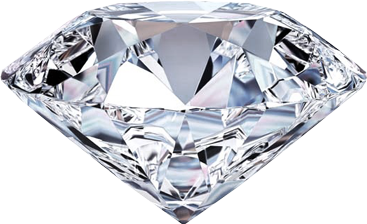How are Diamonds Mined from the Bottom of the Ocean?
How are Diamonds Mined from the Bottom of the Ocean?
Posted by Sharif Khan on 20th Jan 2020

Diamond mining activities have been taking place since time immemorial. Land mines have continually proven to be unreliable in meeting the global need for diamonds. Fears of the eventual depletion of terrestrial mines have led researchers to explore alternative resources, such as underwater mining.
Is Underwater Mineral Prospection a Recent Development?
Although underwater diamond exploration may have begun only recently, the idea of deep-sea mining goes way back, having first been broached in the 1960s when the idea came up through J. L. Mero’s publication titled Mineral Resources of the Sea. In this book, the author claimed that the ocean floor held an unlimited supply of minerals, such as nickel, gold, zinc, manganese, cobalt, etc.
According to Mero, underwater minerals occurred in deposits of manganese nodules. The nodules could be observed as lumps of compressed flowers lying on the seafloor, at depths of approximately 5,000 m. In the wake of this revelation, the US, France, and Germany immediately sent research vessels into the sea to ascertain the existence of these nodule deposits. However, it turned out that the initial projections on the potential of underwater minerals were exaggerated. Also, considering that metal prices were at an all-time low at the time, underwater mining did not seem feasible.
From the 1960s to 1984, up to USD 650 million were spent on exploring the underwater for precious metals, with very little to show for it. However, the subsequent years witnessed a significant rise in the demand for precious metals in China, India, Japan, and Korea. Underwater mining companies resumed their operations, this time shifting their focus from nodule deposits to hydrothermal vents.
Presently, Papua New Guinea boasts the world’s best deep-sea metal mining site - the Solwara 1 Project. The mining site is located at a water depth of 1600 m, and mineral prospecting generally takes place using remotely-operated underwater vehicles.
Much of the deep-sea mineral exploration has been focused on precious metals without enough attention paid to precious stones like diamonds. At a time when the idea of deep-sea mineral mining was conceived, the diamond was still predominantly viewed as a luxurious and ostentatious commodity. Therefore, the supply for the gemstone often exceeded the demand for it.
Mineral exploration companies were keen on prospecting for useful minerals as opposed to those whose significance was more sentimental than economical. However, attitudes on jewelry ownership changed for the better. Consumers no longer viewed diamond as a measure of wealth, and instead, it was considered more as a marker of prestige and a symbol of timeless love. That led to a sudden increase in the demand for diamonds, so much so that most traditional mines were depleted.
How Are Diamonds Mined From The Bottom Of The Sea?
It is believed that millions of years ago, numerous gemstones were washed from the Orange River, ending up in the ocean. The gems settled at the bottom of the Atlantic Ocean, off the Namibian coast. The fact that diamonds have always been abundant along the Orange River belt suggests that there could be a lot more lying underwater.
Diamond mining companies have recently begun exploring such minerals using vessels that are similar to oil rigs. The mining vessels also resemble a 300-foot-long ship designed wholly with dredging equipment, metal pilings, and a helicopter landing platform.
But the decision to embark on deep-sea diamond mining was not only inspired by the discovery of rich ocean deposits. Experts predict that by 2050, all the onshore diamond mining sites will have been depleted. Worse, there has been no new major land mine discovered for over 20 years now, leave alone the fact that mining operations in Australia and Canada are projected to cease in five years.
Underwater diamond prospection activities in Namibia are steered by De Beers, a company with the distinction of being a global leader in diamond exploration and production. In 1991, De Beers purchased mining rights to over 3,000 square miles of the seafloor, of which only 3% has been explored thus far. The slow pace in tapping into the underwater deposits was primarily due to the length of time it took to develop the right marine diamond mining technology.
The underwater diamond exploration process is way more intricate than onshore mining. De Beer’s marine gems currently account for a paltry 13% of the company’s total production, which goes to show how complex deep-sea diamond mining is.
But De Beers do not exclusively run the underwater diamond mining operations in Namibia, and instead work in liaison with the Namibian government. The two entities partner through the Debmarine Namibia joint venture that of late released one of the vessels believed to change the prospects of underwater mining in the country significantly. The SS Nujoma, aptly named after the former president Sam Nujoma, is the world’s most sophisticated diamond exploration vessel.
The marine diamond mining process begins by sending drones to survey massive stretches of the sea. The footages acquired help the experts to determine the areas worth exploring. According to De Beers, most diamonds occur close to the surface, approximately 6 ft. beneath the seafloor.
After mapping out the potential mining zones, vessels like the SS Nujoma are sent in to suck up huge sediments from the seafloor. To work more efficiently, these mining vessels combine the technology from dredging ships, oil rigs, and canneries. Much of the dredging work is done by a tractor-like crawler which is remote controlled. The tractor can hover over 600 metric tons of sediments per hour, which often translates into roughly 80 carats of diamonds.
After dredging the seafloor, the tractor directs a hose that sucks up sediments into the vessel. The sediment is then subjected through a series of equipment that culls materials depending on their size. X-ray technology is deployed to separate the materials by geological composition further. Diamonds move through a series of conveyor belts and machines, before ending up in a metal container that resembles a soup can. The diamonds are then loaded into steel briefcases, following which process a helicopter flows them to shore.
Advantages of Marine Diamond Mining
One of the most outstanding benefits of underwater diamond exploration is the fact that the ocean is still a largely untapped resource. It was only a few years ago that the diamond mining companies took a serious interest in deep-sea diamond exploration, and thus far, it is only in Namibia where much of the marine mining activities take place. It is also worth noting that the apparent lack of sophisticated underwater exploration equipment means that the potential of the ocean as a diamond resource is yet to be fully exploited.
Another significant benefit of marine diamond mining is the fact that throughout the production process at sea, no human hands are involved. As the process is fully automated, cases of job-related injuries and fatalities have been significantly reduced. From the mining company’s point of view, the automation of the production process has helped reduce redundancy, thereby boosting its overall revenues.
Perhaps the most important benefit of marine diamond mining is the quality of the gems obtained. Diamonds mined from the deep sea have proven to be some of the most valuable in the world. The stones are characterized by their greater clarity because they are naturally obtained from the kimberlite rock. Remember that in onshore mines, the kimberlite stone must first be crushed in the process of which larger diamonds also get crushed, thereby affecting their clarity. The CEO of Debmarine Namibia, Otto Shikongo, once explained that over 95% of diamonds recovered from the deep sea tend to be gem-quality. This fact is in sharp contrast to the 40 – 60% recovered in land-based mines.
Is It All Rosy?
Underwater diamond mining faces enormous technological challenges. Although there have been tremendous breakthroughs in terms of developing appropriate mining machinery, there is still a long way to go. Moving into the future, companies will be keen on coming up with better technology; of the kind that cuts back on human involvement even further. Remember that while there is no human hand in the diamond production stage, these marine vessels are not fully automated.
Secondly, there has been a huge ecological debate around the business of marine diamond mining. Environmental advocacy groups like Deep-sea Mining Campaign and Greenpeace have raised concerns about the possible damage to the deep-sea ecosystem. One of their arguments is that deep-sea excavations almost always result in pollution from heavy metal ocean plumes. It is noteworthy here that after the sediments have been processed for diamonds, they are often spewed back into the sea. Depending on the level of contamination during the processing stages, these sediments could alter the ecological balance of the regions where they are ejected. Besides, fish and other sea creatures tend to be sucked along with the sediments.
But, in their defense, De Beers have claimed that all their marine mining activities are above board, arguing that they employ geologists that ensure that the sediments are safely resettled to the ocean floor.
In 2017, up to 1, 378 million carats had been mined off the coast of Namibia, which explains the huge potential of diamonds that remains unexploited in the deep sea. In the future, more diamond mining companies will likely abandon their traditional land-based mines in favor of deep-sea operations. The only challenge, however, is the absence of cutting-edge technology and the ecological issues surrounding marine diamond mining. Thankfully, these are challenges that are surmountable with time.





